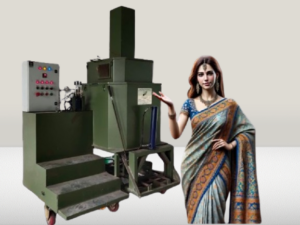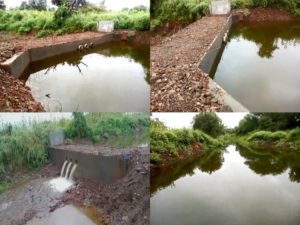Waste Plastic Product Machine

Plastic Dam

ABBREVIATIONS
PWCP :- Plastic Waste Control Project.
WPPM :-Waste Plastic Product Machine.
CCM :- Clean City Model
DRI :- Deshmukh Research Industry.
PDT :- Plastic Dam Technique.
RM :- Relation Mathematics
BSK:- Bharat Swachhata Kendra.
PLASTIC WASTE CONTROL PROJECT (PWCP): A Comprehensive Solution
“The Plastic Waste Control Project (PWCP) aims to address the significant plastic pollution problem in India and worldwide. Banning plastic usage is often not feasible due to its widespread necessity. This leads to an increase in plastic pollution, which severely impacts air, water, and land globally.”
“The PWCP introduces a unique, effective formula. This formula combines our Plastic Dam technology and WPPM Technology with other existing solutions. It serves as a role model for a city’s effective plastic waste management. This innovative approach provides a scalable method to control plastic pollution.”
“Financial incentives play a crucial role. We introduce financial rewards for waste plastic disposal, offering Rs 10 per kilogram. This operates in collaboration with the Bharat Swachhata Kendra (BSK). This system actively encourages plastic recycling at the community level. The BSK is a unit specifically dedicated to processing plastic waste. It operates under the supervision of the municipal corporation.”
“All collected waste plastic transforms into useful DR products. This directly contributes to people-centric welfare schemes. Examples include the construction of Plastic Dams and various plastic-based goods. The PWCP formula is intended for replication across the country. Our aim is to achieve a plastic-free India.”
“Chanakya Bhaskar, the inventor, spearheads this entire PWCP initiative. He deployed the first BSK model and also constructed the world’s first plastic dam in Aravade Village, Sangli. The PWCP has already shown significant results. It includes successful control of plastic pollution and turning waste plastic into a financial resource for the poor. It also creates financial opportunities from waste plastic. Ultimately, it ensures the protection of animals and drives India’s progress towards becoming a powerful nation committed to environmental preservation.”
X ( Twitter ) – Deshmukh Research Industry
TwitterComprehensive Overview of the Plastic Waste Control Project (PWCP)
“In waste management, handling non-degradable waste creates a significant challenge. Therefore, plastic waste management becomes a critical issue globally. Plastic pollution has reached alarming levels worldwide. Existing technologies often struggle to effectively control it. While awareness campaigns are vital, the widespread use of plastics makes controlling pollution difficult. In response, our research at DRI focuses on innovative solutions like Plastic Dams and WPPM Technology.”
Plastic Dam Technique: An Eco-Friendly Innovation
“The Plastic Dam technique is a unique and eco-friendly solution to plastic pollution. This innovative method addresses concerns about air, water, and land pollution. Additionally, it enables crucial water conservation while tackling plastic waste. Implementing a Plastic Dam can lead to making villages, municipal councils, or even significant percentages of municipal corporations plastic-free. For example, the first Plastic Dam in Aravade freed 148 villages and two municipal corporations from plastic pollution and conserved over 25 lakh liters of water.”
ii) Waste Plastic Product Machine (WPPM): Transforming Waste
“Our Waste Plastic Product Machine (WPPM) Technology is a point of pride for municipalities, serving as a role model. This plant processes any type of waste plastic below 150 microns. It does this efficiently, without requiring segregation. It converts the plastic into useful DR products. These include plastic bricks, road dividers, and paver blocks. We successfully constructed the world’s first plastic wall in J&K using these plastic bricks. These walls also provide insulation for social purposes. The WPPM technology comes in manual, semi-automatic, and automatic variants. This allows it to adapt to various quantities of available plastic waste.”
“Both the Plastic Dam technique and the WPPM technology hold immense promise in combatting plastic pollution. Relying solely on awareness campaigns may not suffice in controlling global plastic pollution. Thus, we aim to introduce the ‘Plastic Waste Control Project’ to the world. This project involves selecting a polluted city and implementing plastic waste management using both existing and innovative technologies. We then replicate this successful ‘Clean City Model’ in other cities with government support. India serves as a key role model for the PWCP, aiming to take the final step towards global cleanliness. Our powerful slogan is ‘Final Step towards cleanliness’.”
The Imperative Need for the Plastic Waste Control Project (PWCP)
“The Plastic Waste Control Project (PWCP) offers a groundbreaking approach. Its goal is to tackle the escalating issue of plastic pollution, not only in India but also globally. Plastic has become an indispensable necessity in people’s lives. Therefore, an outright ban on its usage seems unattainable at this juncture, which leads to a surge in plastic waste generation.”
“Consequently, this surge in plastic waste causes detrimental pollution to our air, water, and land resources. In this critical scenario, the PWCP formula assumes paramount importance. It serves as a viable and indispensable solution to this growing environmental challenge.”
Possible Results of the Plastic Waste Control Project (PWCP)
The Plastic Waste Control Project (PWCP) aims for significant positive outcomes:
i.Effective Control of Plastic Pollution: It enables the control of plastic pollution affecting air, water, and land, both in India and globally.
ii.Waste Plastic as a Financial Resource: This project transforms waste plastic into a valuable financial resource, directly supporting the needs of the poor.
iii.Economic Opportunity: The financial incentive for waste plastic (Rs. 10 per kg) creates a flourishing recycling industry. This generates significant income for impoverished communities.
iv.Protection of Wildlife: It helps protect animals from the harmful effects of plastic pollution by reducing overall contamination.
v.National Advancement: The project contributes to India’s advancement as a powerful nation, demonstrating a strong commitment to environmental preservation and cleanliness.
The Plastic Waste Control Project: A Comprehensive Approach to Achieve a Plastic-Free India
The Plastic Waste Control Project (PWCP) aims for a plastic-free India through a comprehensive approach:
a) Role Model Establishment: The objective is to establish a role model in one city. This integrates the Plastic Dam technology, WPPM Technology, and existing technologies for effective plastic waste management.
b) Financial Incentive: We introduce a financial incentive scheme for waste plastic. This operates in collaboration with the Bharat Swachhata Kendra (BSK).
c) BSK Operations: The Bharat Swachhata Kendra (BSK) serves as a dedicated unit for processing plastic waste. Its administration falls under the purview of the municipal corporation.
d) Waste Conversion: All waste plastic is completely converted into useful products. These contribute to various people-centric welfare schemes. This includes constructing Plastic Dams and producing plastic-based goods.
e) Nationwide Replication: We intend to implement the PWCP formula nationwide by replicating its successful model. This ultimately aims for a plastic-free India.
f) Leadership and Milestones: Chanakya Bhaskar, the visionary inventor, actively leads the PWCP initiative. He successfully deployed the first BSK model in one municipal corporation, incorporating his groundbreaking WPPM invention. Notably, he also achieved a significant milestone by constructing the world’s first plastic dam in Aravade Village, Sangli.
Plastic Problem: A Global Crisis and India’s Challenge
“Plastic pollution has emerged as one of the most pressing environmental challenges facing the world today. The excessive use and improper disposal of plastic products have led to devastating consequences. These impact our planet’s ecosystems and human health. Globally, an immense amount of plastic is produced each year. A significant portion of this plastic waste ends up in landfills, oceans, and other natural environments.”
“In India, the plastic problem has reached alarming levels. This is due to the rapidly growing population and industrialization. Improper disposal leads to widespread soil, water, and air contamination. Rivers, lakes, and oceans in India are heavily polluted with plastic debris. This poses serious threats to aquatic life and biodiversity. Marine animals mistakenly consume plastic, leading to internal injuries, suffocation, and death. The problem also extends to terrestrial ecosystems. Here, plastic waste chokes and contaminates soil, affecting plant growth and overall ecosystem health.”
“Besides its ecological impact, plastic pollution also poses a severe risk to public health. As plastics break down into smaller microplastics, they can enter the food chain. This potentially harms human health through the consumption of contaminated fish and other seafood. Furthermore, humans face health risks such as hormonal imbalances, cancer, and respiratory diseases due to toxic chemicals released from plastic.”
“Addressing the plastic problem requires a comprehensive approach. This involves government policies, industry responsibility, public awareness, and individual actions. India has taken steps towards combatting plastic pollution, including efforts to ban single-use plastics. However, the challenge remains in enforcing these regulations and promoting sustainable alternatives. As a global community, urgent action is needed to curb the plastic crisis. We must protect our planet for future generations. By reducing plastic consumption, promoting recycling, and investing in sustainable packaging and waste management systems, we can collectively work towards mitigating the plastic problem and preserving the health of our environment and people.”
